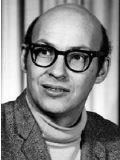Marvin Lee Minsky: pioneer in artificial intelligence research (1927-2016)
DOI:
https://doi.org/10.13140/RG.2.2.11209.06241Keywords:
Minsky, artificial intelligence, biographyAbstract
Artificial Intelligence and its name owe its beginnings to the sum of efforts of scientists around the world with the idea of equipping machines with human capabilities. Marvin Lee Minsky was one of them. This eminent mathematician born in New York in the decade of the 20s had revolutionary ideas in the way in which human intelligence is conceived and in machines. Inventor, innovator and philosopher Marvin Minsky dedicated his life to the end of his days to the understanding of how we develop our intelligence and from this knowledge generate systems whose capabilities match and even exceed human. A man's life can be measured by his contributions to the advancement of humanity and the degree of passion that drives him to work tirelessly to achieve that contribution. This review aims to present a brief biography of Marvin Lee Minsky, presenting him from a scientific point of view through his most relevant contributions and his contributions to the research and development of Artificial Intelligence.
Downloads
References
M. Dennis, Enciclopedia Britanica, https://www.britannica.com/biography/Marvin-Lee-Minsky
Academy of Achievement, Marvin Minsky, P.h.D Father of Artificial Intelligence, https://www.achievement.org/achiever/marvin-minsky-ph-d/
MIT, Brief Academic Biography of Marvin Minsky, https://web.media.mit.edu/~minsky/minskybiog.html
J. Verwijnen, Marvin Minsky - the father of AI, Computer Science, 2016. https://www.semanticscholar.org/paper/Marvin-Minsky-the-father-of-AI-Verwijnen/ef31300364bb686178d7013f8d53ae91da26bac9#extracted
H. Henderson, Artificial Intelligence. Mirrors of the mind, New York: Chelsea House Publishers, 2007.
M. Minsky, Microscopy Apparatus. USA Patent 3013467, 19 Diciembre 1961.
G. Reagan, Marvin Minsky, in Giants of Computing A Compendium of Select, Pivotal Pioneers, London, Springer, 2013, pp. 193-195.
J. Mc Carthy, M. Minsky, N. Rochester and C. Shannon, A Proposal for the Darthmouth Summer Research Project on Artificial Intelligence, August 31, 1955, AI Magazine, 27(4):12, 2006.
A. Alonso, Muy Interesante, https://www.muyinteresante.es/ciencia/articulo/10-frases-celebres-de-marvin-minsky-padre-de-la-ia-241453890012.
M. Minsky, Steps toward artificial intelligence, Proceedings of the IRE, 49(1):8-30, 1961.
M. Minsky, Why programming is a good medium for expressing poorly understood and sloppily formulated ideas, Design and planning II-computers in design and communication, pp. 120-125, 1967.
M. Minsky and S. Papert, Perceptrons: An introduction to computational geometry, MIT Press, 2017.
M. Minsky, Society of Mind: a response to four reviews, Contemplating Minds, pp. 308-334, 1994.
A. Gonzalez, 7 increíbles cosas que necesitas saber sobre Marvin Minsky, padre de la inteligencia artificial, VIX, 2016. https://www.vix.com.es.
J. Alcalde, Muy Interesante, Octubre 1996. https://www.muyinteresante.es/tecnologia/articulo/marvin-misnky.
A. Bernardo, Blogthinkbig.com, 29 Enero 2016. https://blogthinkbig.com/el-legado-de-marvin-minsky-padre-de-la-inteligencia-artificial.
J. Ortega, BBVA, 26 Enero 2016. https://www.bbva.com/es/fallece-marvin-minsky-padre-la-inteligencia-artificial/.
Administrador, Official Alcor Statement Concerning Marvin Minsky, ALCOR Life Extension Foundation, 27 Enero 2016. www.alcor.org.
I. Nápoles, La investigación científica y el aprendizaje social para la producción de conocimientos en la formación del ingeniero civil, Ingeniería, 11(2):39-46, 2007.
D. Ramos, Ambient intelligence—the next step for artificial intelligence, IEEE Intelligent Systems, 23(2):15-18, 2008.

Published
How to Cite
Issue
Section
Copyright (c) 2021 Carla Fajardo de Andara

This work is licensed under a Creative Commons Attribution-NonCommercial-ShareAlike 4.0 International License.
The opinions expressed by the authors do not necessarily reflect the position of the publisher of the publication or of UCLA. The total or partial reproduction of the texts published here is authorized, as long as the complete source and the electronic address of this journal are cited.
The authors fully retain the rights to their works, giving the journal the right to be the first publication where the article is presented. The authors have the right to use their articles for any purpose as long as it is done for non-profit. Authors are recommended to disseminate their articles in the final version, after publication in this journal, in the electronic media of the institutions to which they are affiliated or personal digital media.


